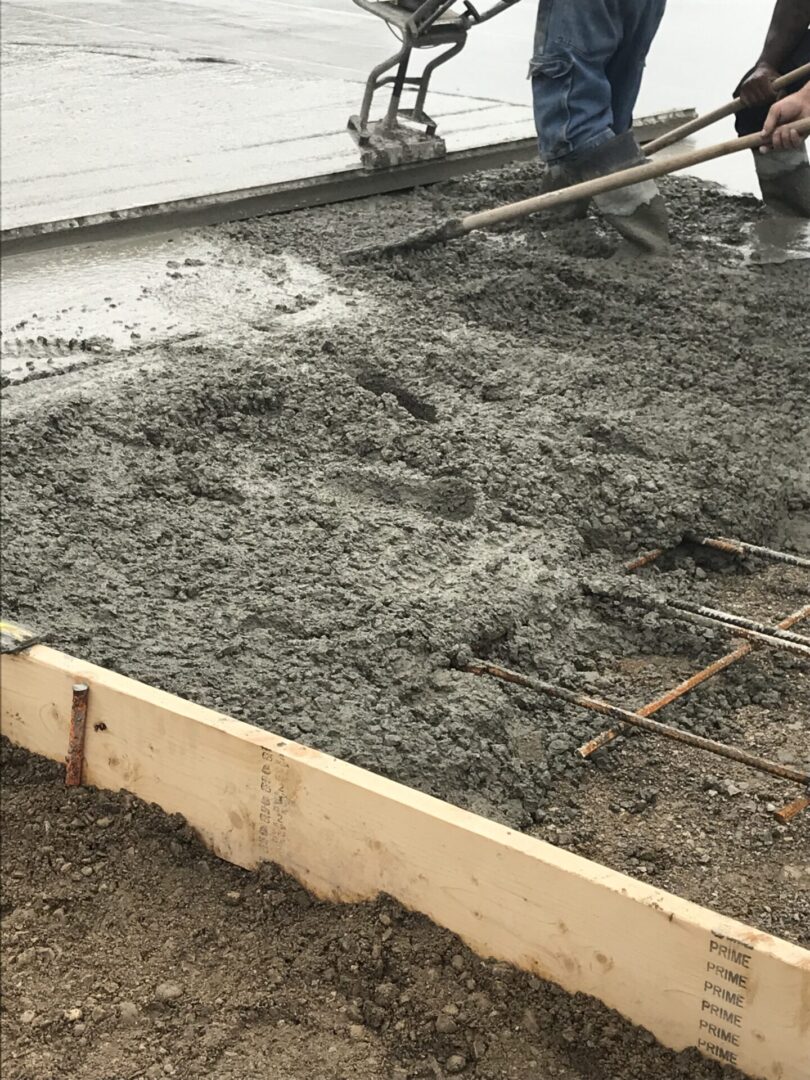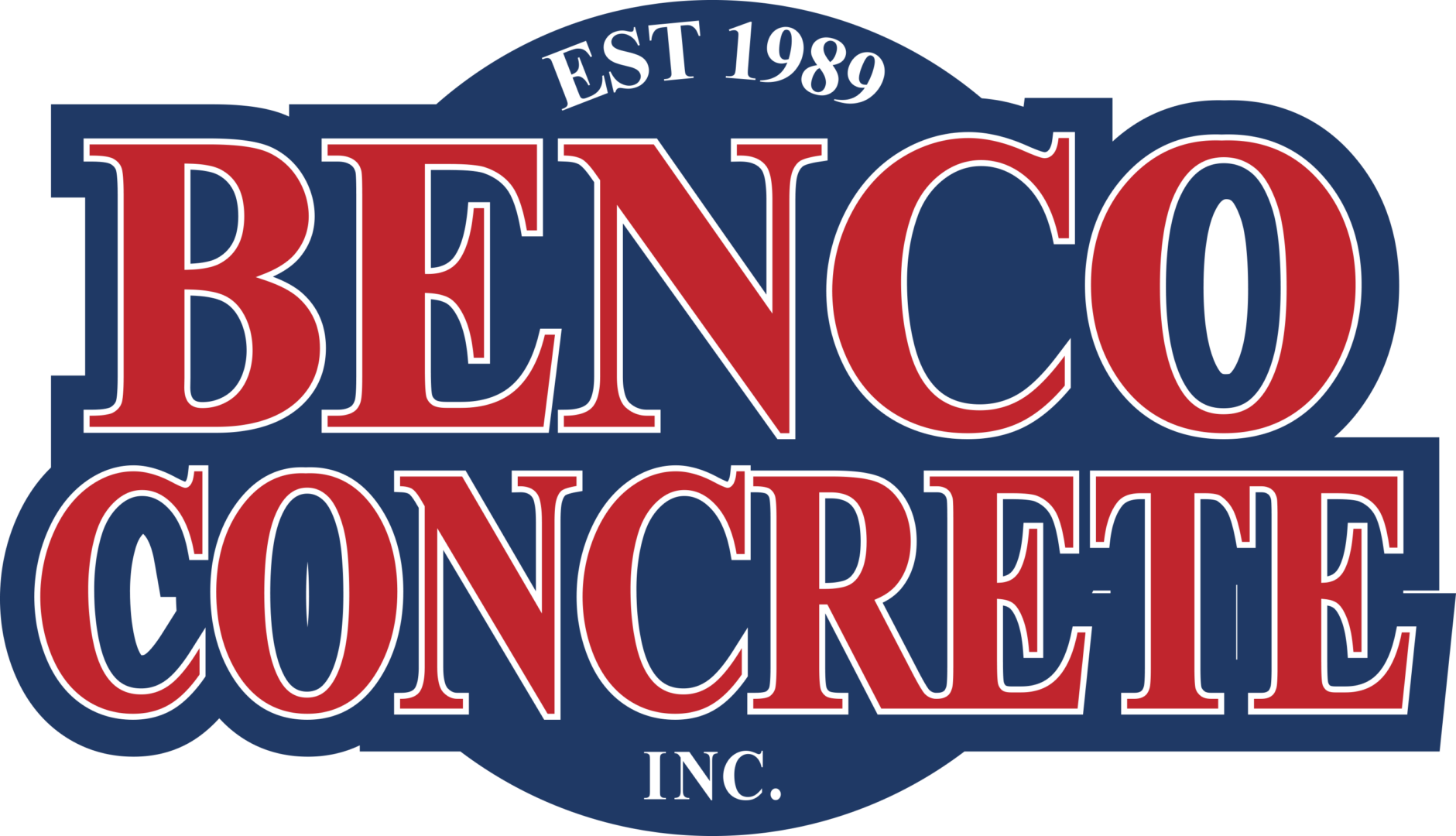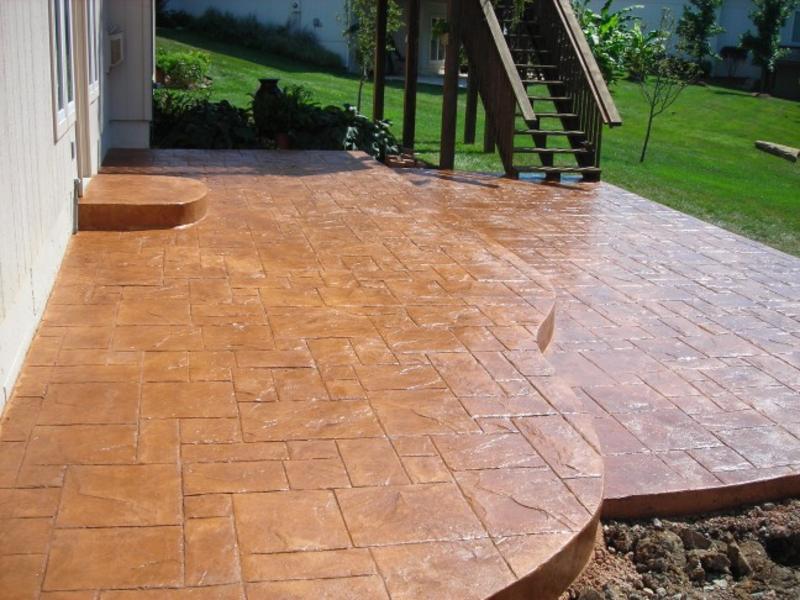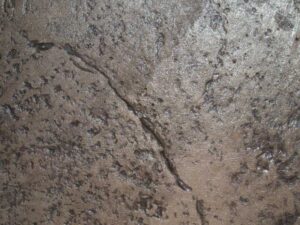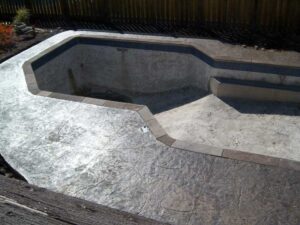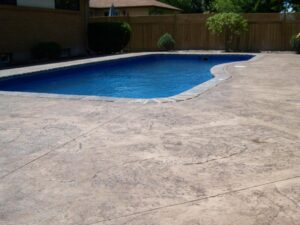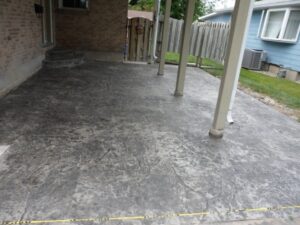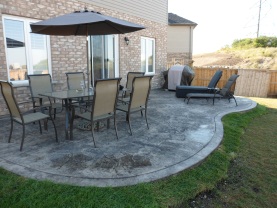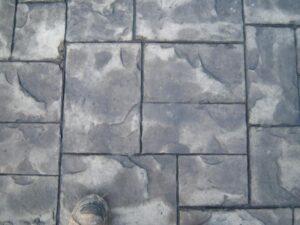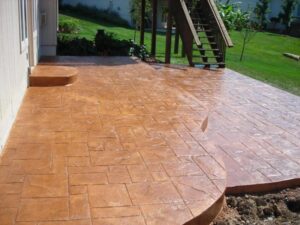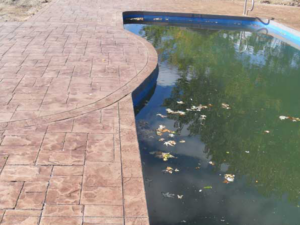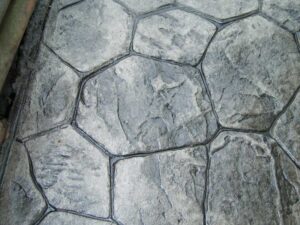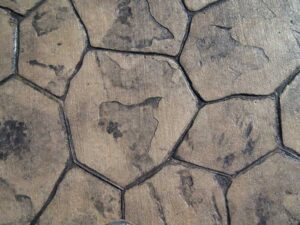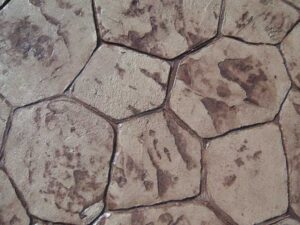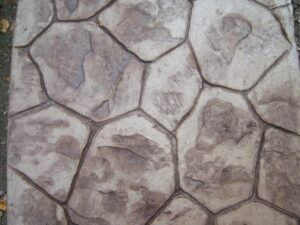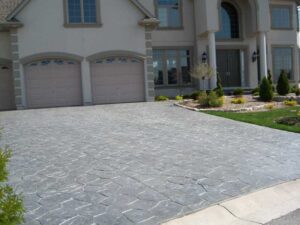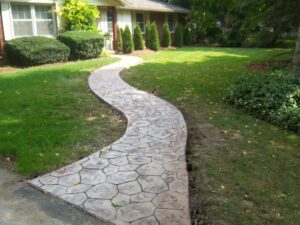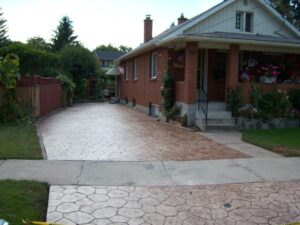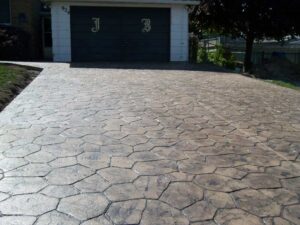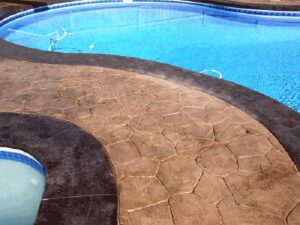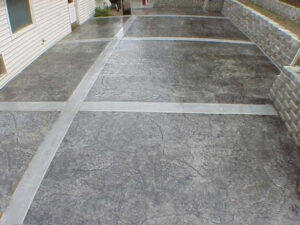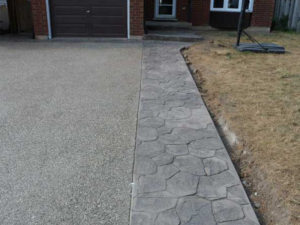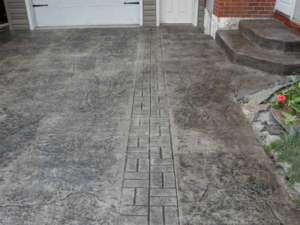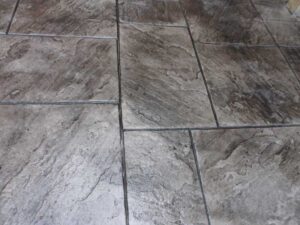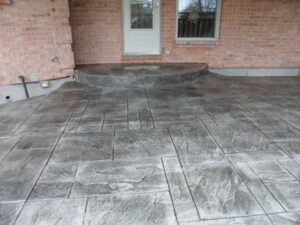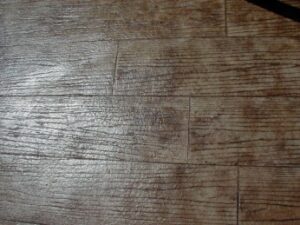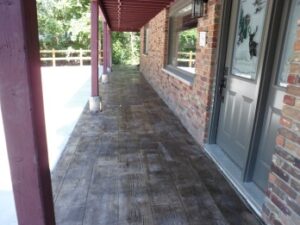Stamped Concrete
Stamped Concrete
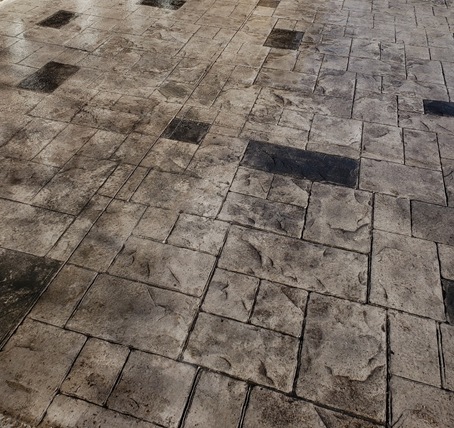
Installing Coloured, Stamped Concrete With Limitless Design Options
At Benco Concrete Inc., we offer visually appealing concrete at a reasonable price. You can choose from a nearly unlimited array of designs and colours with all of our different decorative concrete systems stamped concrete. Why settle for interlocking brick slate, or other natural stone when you have so many other options? Get the style of concrete you want at Benco Concrete Inc.
Advantages of Stamped Concrete
Experience the look of distinction with a quality concrete installation by Benco Concrete Inc. You can get the look of slate, various types of natural stone, and other higher-end materials with our stamped concrete. Our coloured, stamped concrete is also more affordable and easier to maintain compared to interlocking bricks. Regardless of your chosen pattern, you can enjoy any of our decorative concrete styles at a fraction of the cost of brick, stone or slate, while taking advantage of the durability that concrete offers!
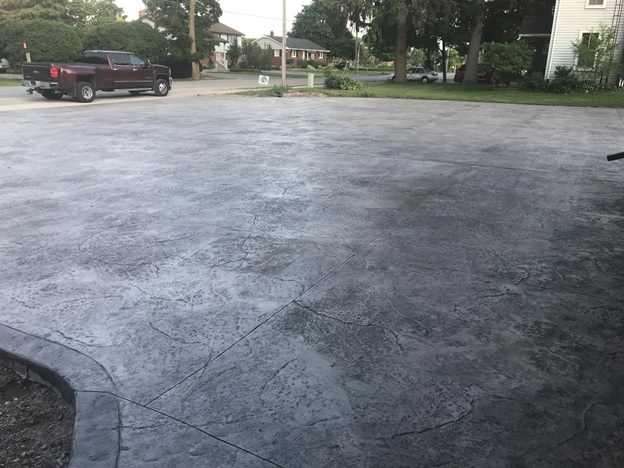
Spaces Ideal For Stamped Concrete
Decorative stamped concrete is a great choice for a diverse range of applications, including:
Residential Properties
Commercial Properties
Retail Spaces
Apartments and Condominiums
Pool Areas
Patios
Decks
Driveways
Sidewalks
Accessibility to the Site
Customers in residential areas usually want work done in either the back yard, front yard, side yard, or all three. Our service rate depends on how inaccessible or easily accessible the site is.
For instance, installing a backyard patio way at the back corner of the backyard while accessing it through a small, 3 feet gate opening is probably the worst-case scenario. We have to hand dig the area and use a wheelbarrow or use far smaller equipment to get the excavated material out and the new concrete in. Not only is this very laborious, but it also takes longer to do.
Better Site Access Means Better Results
Time is essential when pouring fresh concrete, especially in hot weather. When the concrete takes too long to get into the work area, it hardens before it has a chance to be levelled and finished properly, which can lead to disappointing results. Concrete must be somewhat soft when you work with it to get your desired finish. Workability will be consumed and quality cannot be maintained if it takes too long for the concrete to be installed. Sometimes the use of a concrete pump is the only logical choice to relay the concrete to a backyard in a timely manner in order to ensure a good, quality installation.
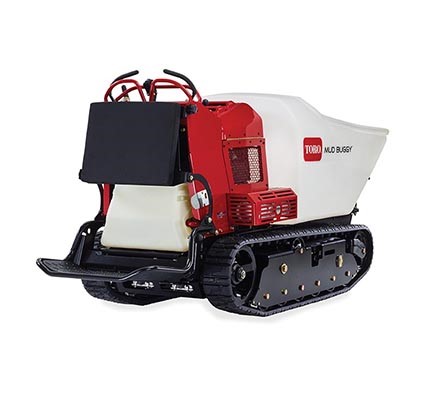
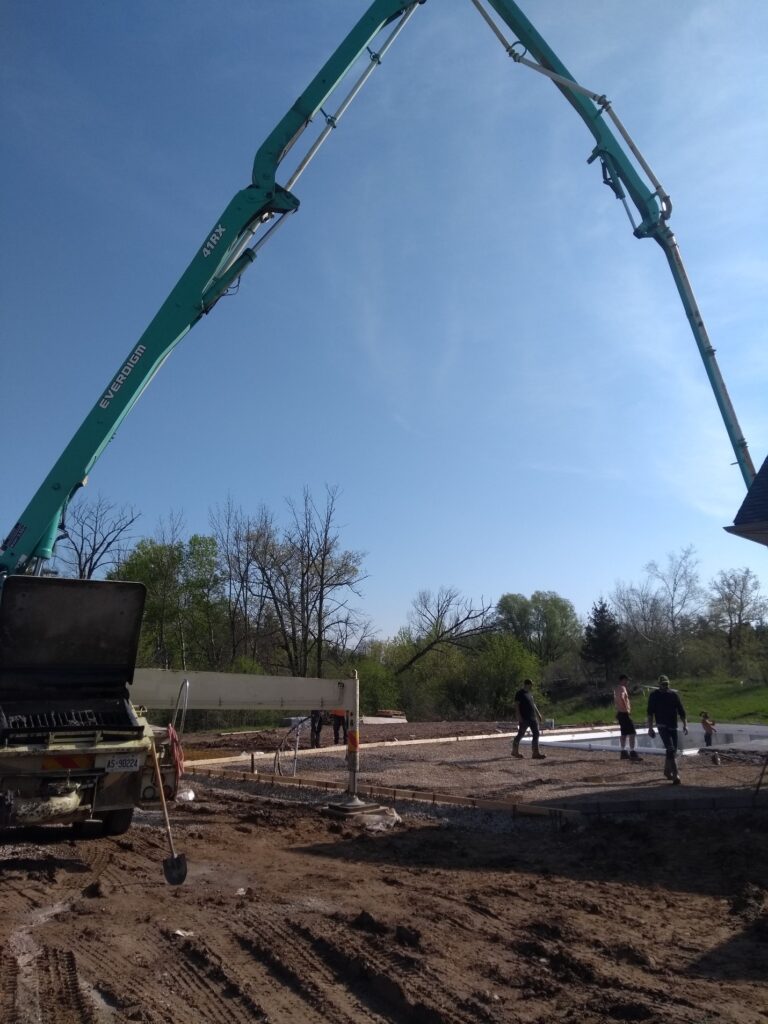
Concrete Pumping
We often need to use a concrete pump to efficiently discharge the concrete directly into the work area. To save money, instead of getting a concrete pump service, customers will have us take out a fence post and a section of a fence to facilitate a wider opening for travel to and from the backyard. It may cost the customer a little bit of money for a new fence post but it is nothing compared to the price of a pump or the price of having us do a job with a shovel and a wheelbarrow. Although pumps work well to ensure timely placement and quality control, they typically cost anywhere between $800 and $1500 to rent one with an operator.
Material to Be Excavated and/or Removed
Many people think that removing old concrete, asphalt, or interlocking brick brings about extra labour expense and dumping fees compared to removing grass and dirt. This simply isn’t true.
Asphalt, concrete, and interlocking brick are usually quicker to remove by using a skid steer or backhoe. They can also be brought to a recycling or crusher yard, where they will be crushed into gravel, which the crusher will sell as a base material for under asphalt roads, concrete, and other applications. Some crushers charge a small amount while others accept it for free.
Dirt, grass, and other organic material have no such use. Crushers usually sift or screen dirt to become fine topsoil that they sell. However, environmental regulations create expenses that have to be covered by customers. This handling and testing of the materials create additional expense for the recycling yards to handle, and dumping dirt can cost up to $40.00 per ton.
Size of the Area
Large jobs have a lower cost per square foot than smaller ones. When a job is smaller, the unit price is raised for an installer to cover the fixed expenses that every contractor faces. But when a job is larger, there are more square feet to offset these expenses, allowing a lower unit price to be offered.
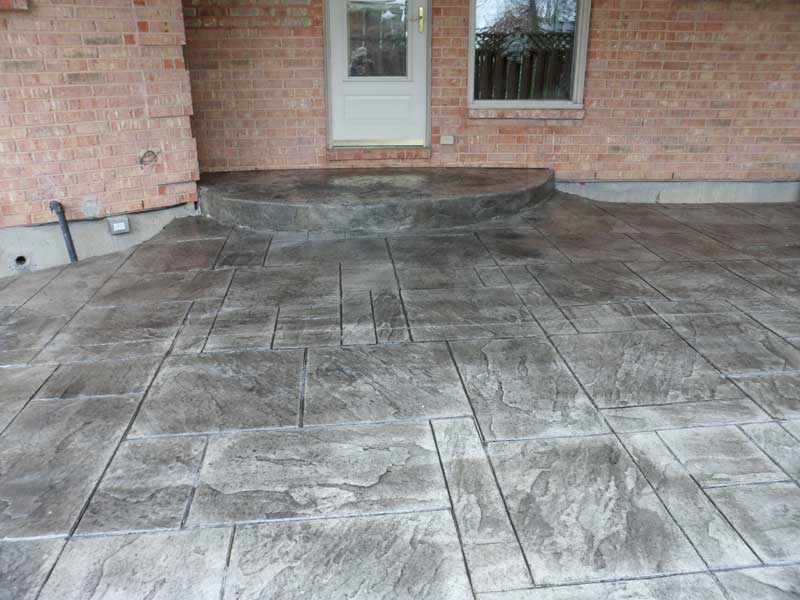
Using Gravel to Prepare a Base
Existing gravel can be graded, compacted, and used as a base for under the new concrete, but sometimes, when existing gravel is removed to put the concrete in place, the amount of gravel left might be inadequate to act as a sufficient base. In this case, some of the natural ground (dirt, clay) that was under the gravel will have to be removed to make room for a minimum of 6 inches of gravel necessary for a proper base.
When this happens, you can still use the old gravel if it hasn’t been mixed with the dirt or clay during the excavating. You must still add new gravel in with it to have the necessary amount to constitute an adequate base.
